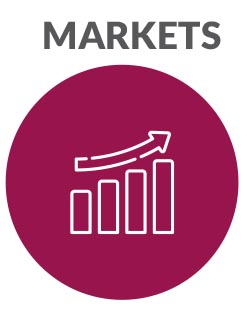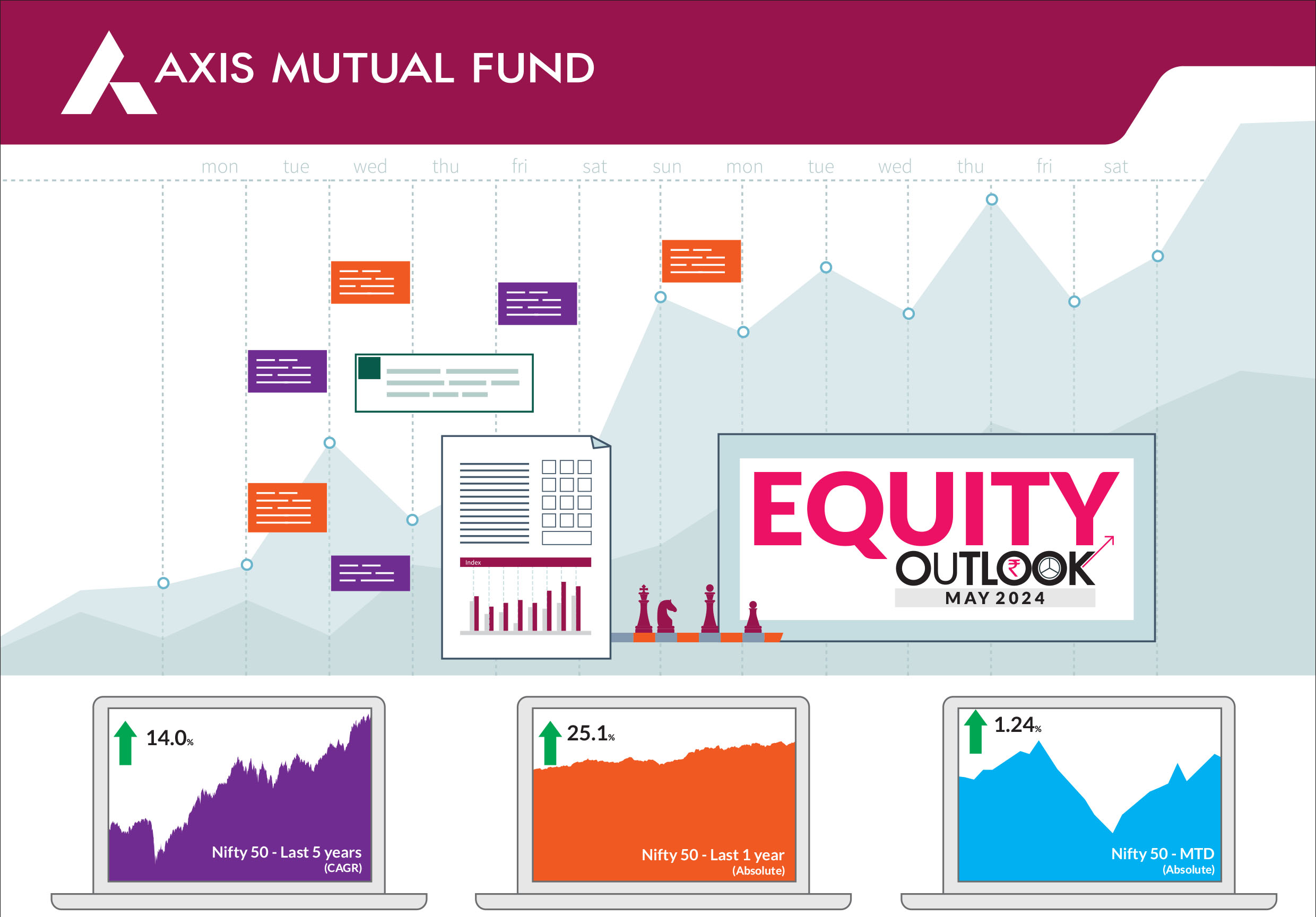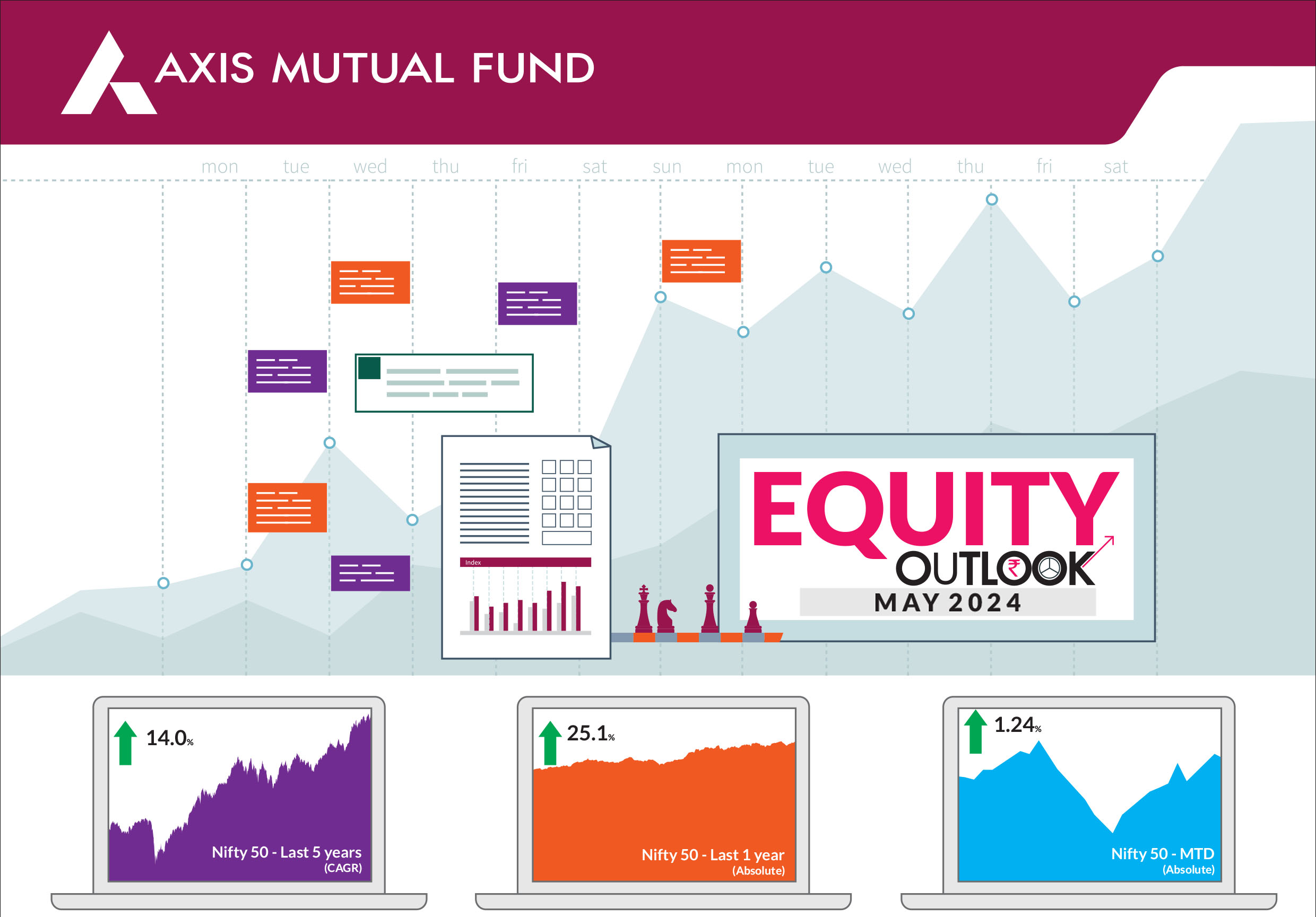Equity market valuations are broadly reasonable
adjusted for the cyclical low in earnings and
potential for revival going forward.
We remain bullish on equities
from a medium to long term
perspective.
Investors are suggested to have their
asset allocation plan based on one's risk
appetite and future goals in life.
 Indian equities faced bouts of volatility through the month but ended in the positive territory. The S&P BSE Sensex and the NIFTY 50 ended 1.1% and 1.2% higher respectively. After a sharp correction in March, mid-caps and small caps surged and outperformed the frontline indices. The NIFTY Midcap 100 ended the month higher 5.8% while NIFTY Small cap 100 ended up 11.4%. Market volatility was marginally higher compared to the previous month while the advance decline line was up 37% in April. |
 The earnings season has been lukewarm so far and the mid and small caps witnessed earnings downgrades compared to their large cap counterparts. This season did not witness any major recovery in consumer staples, and growth in the IT sector has been modest. In addition, sluggish export demand and slow B2B execution due to the elections are all expected to keep the earnings tepid in the near future. However, forward guidance is suggestive of improving demand in select B2C sectors due to a positive impact of heat wave in certain categories and a base effect. The K-shaped trajectory continues. B2B segment, especially capital goods are witnessing election related slowdown. |
 Despite the volatility, key benchmark indices have touched all time highs or remain closer to the highs. The market movements seen in the last few months suggest that although consolidation could continue in the near term, investors can utilise these corrections to increase exposure to equities. A word of advice is to focus on the long term and shut out any noises in the near term. Valuations in India remain expensive relative to Asian peers. Robust macro indicators at almost all levels, lower levels of inflation, expectations of falling interest rates later in the year, increased industrial activity and the fall in twin deficits (both current account and fiscal) have led to increased optimism and an extended goldilocks scenario. Elections are underway and the final outcome on June 4 will set the tone for the markets. Markets have priced in expectations for the incumbent party to continue and policy continuity remains the key. Meanwhile, India's long term growth story remains intact with our country being one of the fastest growing economies globally. With India's GDP growth projected at a robust 7% for FY25E, the RBI has enough policy room to hold rates at 6.5%. Headline inflation is on its way down and a normal monsoon will help bring down price pressures. High frequency indicators such as PMIs, GST collections, rail freight and domestic passenger growth remain encouraging compared with the historical standards. Construction cycle is already underway with rise in government infrastructure related spending and a revival in real estate. Rising private capex should further accelerate the capex cycle. Corporate balance sheets and banks are in great shape laying the foundation for a vigorous private capex cycle. We expect that the market trends will be shaped by positive cyclical trends, and sectors driven by capital expenditures like infrastructure, locally-focused manufacturing, and utilities are poised to gain. Our investment strategies are aligned with this outlook, and we have a higher allocation in these areas. Additionally, we hold a positive view and have an overweight in the consumer discretionary sector, especially in the automotive and real estate industries. Our portfolio also includes investments in sectors such as energy, defense, and transport, which stand to benefit from government policies. With firms seeking funds for growth and new ventures, we expect a surge in credit demand, which is expected to enhance the banking sector's results. In the pharmaceutical industry, we anticipate the favorable pricing conditions to persist and intensify. Conversely, we have reduced our holdings in the export-oriented segment, attributing this to the decline in global economic growth. |
Source: Bloomberg, Axis MF Research.


